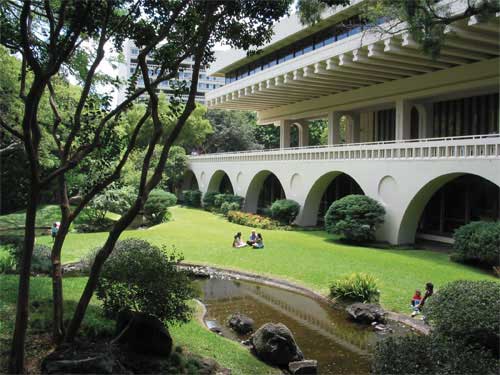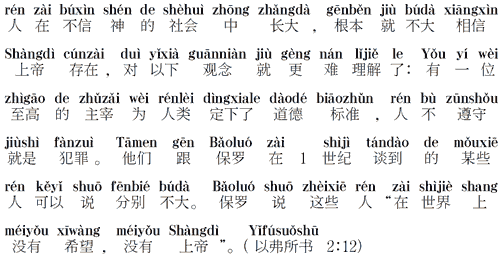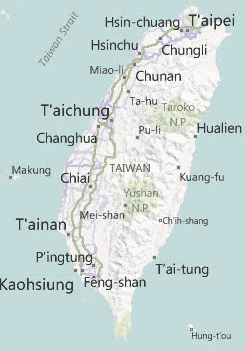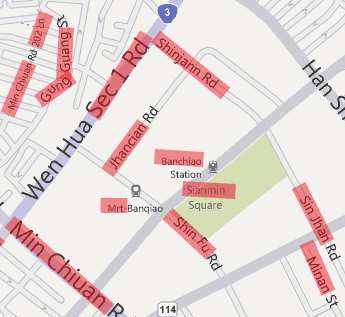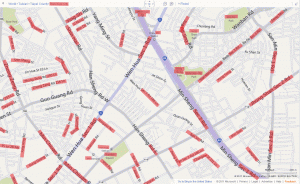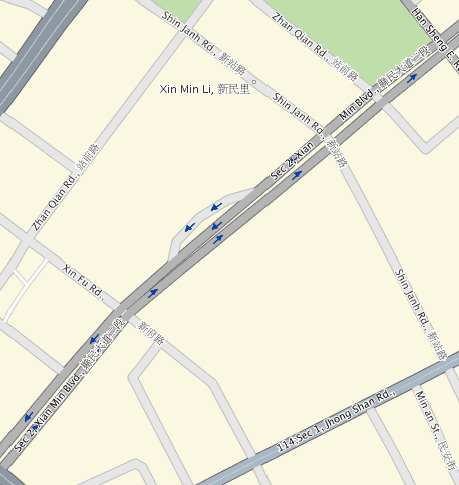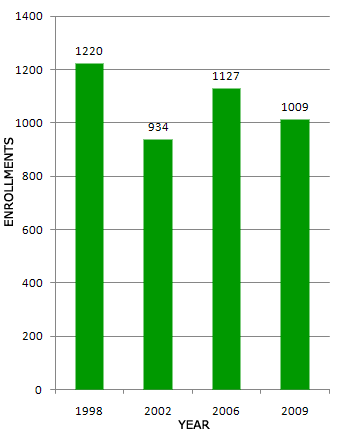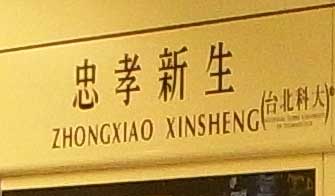 People generally don’t listen carefully to the announcements on the Taipei MRT, a subway/elevated train mass-transit system. With four languages to get through — Mandarin, Taiwanese, Hakka, and English — that’s a lot of talking. And anyway, the cars can be so full that it’s hard to hear such things clearly over all the background noise anyway. Still, you’d think that at least the people who make the recordings would be paying attention.
People generally don’t listen carefully to the announcements on the Taipei MRT, a subway/elevated train mass-transit system. With four languages to get through — Mandarin, Taiwanese, Hakka, and English — that’s a lot of talking. And anyway, the cars can be so full that it’s hard to hear such things clearly over all the background noise anyway. Still, you’d think that at least the people who make the recordings would be paying attention.
Below is a link to a recording of a relatively new announcement, advising people on the Danshui line that Minquan West Road is the place to change trains for the Luzhou line, which opened late last year: “Mínquán West Road Station. Attention: passengers transferring to Sānchóng, Lúzhōu, or Zhōngxiào-Xīnshēng please change trains at this station.“
Or at least what I typed above is what the announcement is supposed to give. As you may have noticed, however, “Zhōngxiào-Xīnshēng” is rendered “Zhongxiao-Xinshang,” with a very un-Mandarin shang that rhymes with the English words clang, pang, hang, and sang. And that’s without getting into the matter of tones.
I pointed out this error to Taipei City Hall and the authorities in charge of the MRT. As usual, I had to spend some time repeatedly explaining: “No, Xinshang is not the English pronunciation of Xīnshēng. Xīnshēng isn’t English. It’s Mandarin. What the announcement gives is simply an error….” I was pleasantly surprised, however, that the main person I spoke to at TRTS did not require the usual explanations. He understood the problem and said it would be fixed.
This, however, was a couple of months ago. The recordings have not yet been changed. I haven’t been holding my breath over this, though, because the official with the MRT system warned that it would take time to run a public bid notice for a new recording, make the new recording, and then install the recording in the front and back cars of some 100 trains. Still, the system has been known to move fairly quickly; unfortunately, this usually happens only when the change is for the worse, such as renaming Xindian City Hall as Xindian City Office (now Xindian District Office), or renaming the whole Muzha line because some superstitious nitwits thought that a joking, non-official nickname was bringing the system bad luck.
For longtime residents of Taipei, the shang mispronunciation will likely bring back memories of the bad old days when the MRT system first opened. Back then the signage was predominantly in bastardized Wade-Giles, with the pronunciations in the English announcements matching what a clueless Westerner might say when shown names like Kuting and Nanking (properly: Gǔtíng and Nánjīng, respectively). Perhaps the most offensive pronunciation on the system then was given to Dànshuǐ, which at the time was [mis]spelled Tamshui on the MRT system. This was pronounced as three syllables: Tam (rhymes with the English word “dam”) + shu (“shoe”) + i (as in “machine”).
By the way, the Xinbei City Government has been changing signs around Danshui from Danshui to the old Taiwanese spelling of Tamsui (note: not Tamshui). But more about that in a different post.

